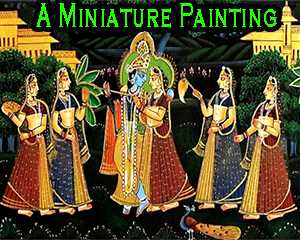Class 4 (SST)
Rich Heritage of India Questions and AnswersNew Words to Know
Culture : The sum total of the inherited ideas, beliefs, values and knowledge
Patronage : To provide financial and moral support
Miniature painting : A form of painting that focuses on art in much smaller than usual sized paintings
Points to Remember
+ India has a rich cultural, social, political and religious heritage.
+ The world's oldest living religion, Hinduism, originated in India.
+ More than 300 languages are spoken in India. Our Constitution recognises 22 languages.
+ There are two kinds of classical music in India-Hindustani and Carnatic.
+ India's folk dances and classical dances are very popular.
+ Many festivals are celebrated in India. They are divided into three main categories—national festivals, harvest festivals and religious festivals.
+ India has a rich tradition of painting and architecture.
EXERCISE
Tick (✓) the correct answer
1. Which of the following is the oldest religion of the world?
a. Islam[box]
b. Christianity[box]
c. Hinduism[tikbox]
2. The number of languages that Indians speak is about-
a. 400[box]
b. 300[tikbox]
c. 500[box]
3. Which of the following is not a folk dance?
a. Lavani[box]
b. Raas-Garba[box]
c. Kathak[tikbox]
4. The Government of India has awarded the distinction of classical languages to-
b. Oriya[box]
a. Tamil[box]
c. Both of these[tikbox]
Fill in the blanks
1. Our Constitution recognises
22 languages.
2.
English/Hindi is the official language of India.
3.
Ustad Bismillah Khan is a famous shehnai player of India.
4. The Rajasthani folk dance is known as
Ghoomar.5.
Bhangra and
Giddha are the folk dances of Punjab.
Short Answer Questions
1. Which three types of festivals are celebrated in India?
There are three Types of festivals celebrated in India. These are -
i) National festivals
ii) Harvest festivals and
iii) Religious festivals.
2. Name three Indian temples of magnificent architecture.
Kailashnath Temple at Kanchipuram, Meenakshi temple at Madurai, and Sun Temple at Konark are the three Indian temples of magnificent architecture.
3. Mention any four musical instruments used in classical music.
Veena, Sitar, dholak and tabla are the four musical instruments used in classical music.
4. Give two examples of Buddhist architecture.
The stupas of Sarnath and Sanchi are the two examples of Buddhist architecture.
5. What are the two classical music forms of India?
Hindustani music and Carnatic music are the two classical music forms of India.
Answer the following questions
1. What are the Ajanta and Ellora Caves famous for?
Ajanta is famous for the wall paintings and rock-cut pictures described about lord Buddha. Ellora is famous for large rock-cut monastery temple caves complex of Buddhist, Hindu, and Jains.
2. Write what you know about miniature painting.
![A Miniature Painting]()
Miniature painting is a form of Painting that focuses on art in much smaller then usual size painting. This form of painting was brought to India by the Persian painters who were invited by the Mughal emperor of India. It was also patronised by the Rajput kings. These paintings depict stories of Radha-Krishna and the battle fought by the Rajput Kings.
3. Name the languages which are recognised by our Constitution.
Assamese, Bangla, Bodo, Dogri, Gujarati, Hindi, Kannada, Kashmiri, kankani, Maithili, Malayalam, Manipuri, Marathi, Santhali, Sindhi, Tamil, Telugu and Urdu Are the languages which are recognised by our constitution.
4. Write a paragraph on the festivals of India.
Festivals of India are divided in three main categories. National Festivals, Harvest Festivals and Religious Festivals. Independence Day and Republic Day are two examples of national festivals, Onam and Pongal are two examples of harvest festivals and Diwali and Holi are two examples of religious festivals.
5. Write a few sentences about the literature of India.
Indian literature can be broadly divided into two categories, religious literature and non religious or secular literature. During the Mughal period there was Rapid growth and development of Persian and Urdu literature in India. During the British period works began to be written in the English language.
Share this Page



